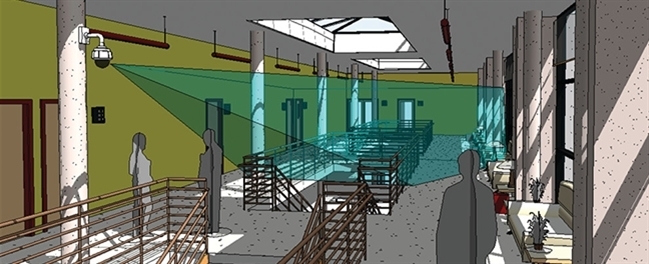
In the past, engineers used to draw their drawings with the T-Square. With the development of computer technologies, drawings have started to be made digitally with 2D drawing programs and the T-Square has lost its importance. Over time, such software developed in parallel with the needs and 3D software and all kinds of products, structures and installations began to be drawn in three dimensions.
So far, everything was very pleasant, but when many different people in the same location had to draw different products and installations, separate layers started to be required. This was also provided, but the information was too excessive and it was getting harder and harder to read. In addition, there was no platform where systems could share common information!
At this point, a multidimensional information sharing process called BIM (Building Information Modeling), which can be jointly used by all stakeholders, emerged. Although the process seems to be three-dimensional, it includes many dimensions such as time, document, security, cost, previous actions, etc.
Today, it has become compulsory to use it as a standard in many large projects.
According to the National BIM Standards Institute, BIM is a digital representation of the physical and functional characteristics of a facility. A BIM is a source of information that is open to sharing and provides a reliable basis for decisions to be made during the life-cycle of a facility. The basis of the BIM is to collaborate with different stakeholders at different stages of a facility's life cycle to add, extract, update or change information in the BIM to support and reflect stakeholders' roles.
In the BIM, each design is defined as an object. Each object is associated with other objects. Therefore, a change in an object automatically changes and adjusts other dependent or adjacent objects. With this feature, more accurate cost estimates, material tracking and product order schedules can be developed.
The BIM can be used in all large and small building drawings. Since it is not yet common among manufacturers, only the elite manufacturers publish BIM models of their products. Therefore, you have to produce models yourself, which require time and cost. It also introduces new workloads in the product updates and changing models.
The BIM is an alternative way of thinking and provides a different approach for purchases and deliveries. Unlike the conventional methods, it is the best tool that allows participants to integrate with a platform where they can share the same information and work together against individual information repositories and incompatible software technologies.
The use of BIM solutions in the sectors enables projects to be concluded with lower costs as they can be managed by a smaller team in terms of design, construction and operation of buildings and more speed due to higher quality work and contemporaneous working due to the common database.
Since it allows you to view the digitally finished design, it allows you to get the visual appreciation of the stakeholders in the digital environment.
Stakeholders do not need to ask for information from each other, they can look at the information directly from the BIM.
The use of the BIM in all kinds of structures significantly increases efficiency. Because the project is open to the common use of many stakeholders such as engineers, consultants, architects, designers, subcontractors, employers, etc. in the digital environment, everyone can proceed by viewing each other's work and the chaos frequently encountered in the field is solved before it occurs. This situation can increase efficiency by 2-3 times.
The unfavorable side is that it will take time to become standard in the industry since it is very new to the construction industry. But even in this process, it will add a lot of value to the projects.